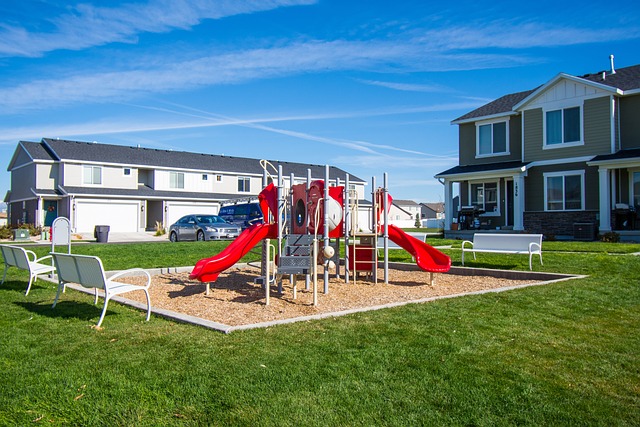Address Occupant Lookup (AOL) leverages data analytics to identify and verify individuals or entities linked to specific addresses, integrating geographical, demographic, and historical data from public records and databases. This technology benefits marketing, urban planning, security, and emergency response by revealing patterns, trends, and connections. In the digital age, AOL consolidates fragmented data for clearer insights, enhancing customer service in hospitality and property management, optimizing urban services, and enabling informed decision-making. Despite challenges like data accuracy and privacy, future trends include blockchain for enhanced security, AI/ML for automation and personalization, promising to revolutionize AOL globally.
Data analytics is transforming the way we understand address-based information, particularly in the realm of Address Occupant Lookup (AOL). AOL involves identifying individuals or entities residing at a specific location, crucial for various applications from marketing to emergency services. This article delves into the intricacies of AOL, exploring how data analytics streamlines the process and enhances its accuracy through Big Data and Machine Learning. We’ll also discuss real-world use cases, challenges, and future trends in this evolving field, underscoring the power of data-driven insights in navigating our increasingly digital landscape.
- Understanding Address Occupant Lookup: The Basics
- The Role of Data Analytics in Streamlining the Process
- Enhancing Accuracy: Leveraging Big Data and Machine Learning
- Real-World Applications: Use Cases and Benefits
- Challenges and Future Trends in Address Occupant Lookup
Understanding Address Occupant Lookup: The Basics

Address Occupant Lookup (AOL) is a powerful process that leverages data analytics to identify and verify individuals or entities associated with specific addresses. It involves an intricate dance between geographical data, demographic insights, and historical records. By scouring diverse datasets, including public records, government databases, and private information repositories, AOL systems can provide a comprehensive view of address occupants.
This lookup process is far from superficial; it delves into the heart of community dynamics. It offers more than just names and addresses—it unveils patterns, trends, and connections that can be pivotal for various purposes, from marketing and urban planning to security and emergency response. In today’s digital era, where data is abundant yet often scattered, AOL consolidates this information, providing a clearer picture of the people behind the places we call home.
The Role of Data Analytics in Streamlining the Process

The role of data analytics is pivotal in revolutionizing the traditional process of Address Occupant Lookup (AOL). By harnessing the power of big data and advanced algorithms, organizations can efficiently navigate through vast amounts of information to identify and verify occupants associated with specific addresses. This technology streamlines the entire lookup process, making it faster and more accurate than manual methods.
Data analytics offers a systematic approach, leveraging historical data, real-time updates, and sophisticated predictive models to anticipate and confirm occupant details. This not only reduces human error but also saves significant time and resources. With data analytics, businesses can quickly verify occupancy status, update records, and make informed decisions based on accurate insights derived from the analyzed information.
Enhancing Accuracy: Leveraging Big Data and Machine Learning

In the realm of Address Occupant Lookup, enhancing accuracy has become paramount with the surge in data availability. Big Data, encompassing diverse and vast datasets, plays a pivotal role in refining lookup processes. By integrating historical records, real-time updates, and socio-demographic information, machine learning algorithms can predict and verify occupant details with remarkable precision. This data-driven approach ensures that every lookup is an informed and reliable one.
Machine Learning (ML) techniques, particularly supervised learning models, are instrumental in identifying patterns within the data. These models learn from labeled datasets, allowing them to classify addresses accurately based on historical occupancy trends. As new data flows in, ML algorithms adapt and refine their predictions, fostering continuous improvement in lookup accuracy. This dynamic nature ensures that Address Occupant Lookup remains efficient, effective, and up-to-date, catering to the evolving needs of various industries.
Real-World Applications: Use Cases and Benefits

Address Occupant Lookup (AOL) has transformed various industries with its real-world applications, offering significant advantages in an increasingly data-driven world. One of the key benefits is improved customer service and engagement for businesses, especially in sectors like hospitality and property management. For instance, hotels can utilize AOL to quickly verify guest details upon check-in, streamlining the process and enhancing security. Property managers can efficiently track occupancy rates, enabling them to make informed decisions about rental pricing and maintenance schedules.
Moreover, data analytics behind AOL contributes to better urban planning and resource allocation. Cities can analyze demographic information and real-time occupancy data to optimize public services, such as waste management and emergency response systems. This not only enhances the quality of life for residents but also promotes sustainable urban development. With its ability to provide accurate and up-to-date insights, AOL has become an indispensable tool in modern society, fostering efficiency, security, and informed decision-making across multiple domains.
Challenges and Future Trends in Address Occupant Lookup

Address Occupant Lookup (AOL) has faced several challenges over the years, from data accuracy and privacy concerns to the integration of diverse datasets. As the practice matures, one of the primary hurdles remains ensuring up-to-date and reliable information. Outdated records and constantly changing resident details can lead to inaccurate lookups, impacting the overall effectiveness of this process.
Looking ahead, the future of AOL is poised for significant advancements with the continued evolution of data analytics. Emerging trends include enhanced data integration through advanced technologies like blockchain, which promises improved security and interoperability. Additionally, artificial intelligence (AI) and machine learning algorithms can play a pivotal role in automating data cleaning processes, predicting address changes, and personalizing lookup outcomes. These innovations aim to streamline AOL, making it more efficient, precise, and accessible for businesses and organizations worldwide.
Data analytics has revolutionized the way we approach Address Occupant Lookup, making it more efficient and accurate. By leveraging big data and machine learning techniques, we can enhance the process of identifying occupants at a given address. Real-world applications showcase the significant benefits, from improved customer service to enhanced security. While challenges remain, future trends in Address Occupant Lookup look promising, with advanced analytics tools continuing to transform this essential practice.



